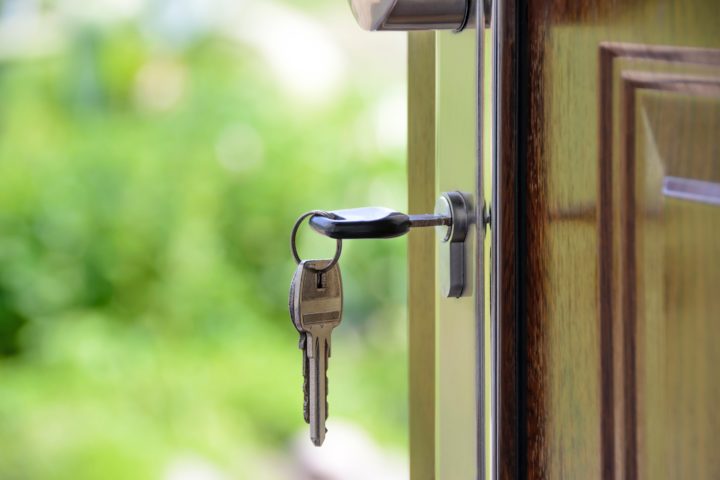The following contribution is from another author.
If your tenancy agreement is about to end, one of the first things you need to do is ensure your home is clean, organised, and in good condition. Before leaving, you have to take photos of every nook and cranny of the property, including the interior parts of some appliances (if these were provided by your landlord).
Once you’re done documenting everything, you can get in touch with your landlord to inform (or remind) them that your tenancy is ending. It’s also a good idea to remind them about your deposit refund. If your landlord asks for a check-out, agree to one but be sure to be present when it happens. The check-out will allow your landlord to check the property and verify that everything is in good condition and no damage has been done to the property.
You and your landlord will then have to come up with an agreement on how much of the deposit should be refunded. After you leave the property, your landlord has a maximum of ten days to return the money to you.
It sounds like a clear-cut process but in reality, many tenants file complaints and claims against their landlords for not returning their tenancy deposits.
What are tenancy deposits?
At the start of their tenancy, tenants are expected to pay their landlords a tenancy deposit. There are three reasons why a deposit is important:
- It is your financial commitment and assures the landlord that you will follow the terms of your tenancy agreement.
- At the end of your tenancy, if your landlord finds damage or any issues inside the property, or if you left your rent arrears unpaid, they can use the tenancy deposit to pay for these. They can use a portion of it or the entire amount, depending on the damage cost and arrears.
- Landlords are required to put tenancy deposits in the care of a government-approved tenancy deposit protection scheme. This keeps your money safe; your landlord won’t be able to use the money for their own needs.
What is a tenancy deposit protection scheme?
As mentioned above, in the UK landlords are required by law to register tenancy deposits into a government-approved tenancy deposit protection scheme. This legal requirement was first implemented in 2007. The scheme protects deposits and keeps them safe until the end of the tenancy agreement.
Landlords are required to get your deposit into any of the schemes in 30 days or less. Your landlord should also inform you with which tenancy protection scheme provider you registered it.
At the end of your tenancy, your landlord will first provide you with documentation showing how much of the deposit will be refunded to you, as well as details of expenses it was used for (if any). You can file a dispute if you do not agree with your landlord but the money will stay protected in the tenancy development scheme until the resolution of the dispute. The TDP schemes can provide you with a free dispute resolution should you need one. However, you and your landlord can also work on the dispute and come up with a compromise that benefits both parties. You and your landlord have to agree with whatever it is that you finalise. Just be sure all your evidence is ready. This is why it is important to take photos of everything in the property before you leave. The photos will serve as evidence.
What you need to do to get the deposit refund
If you want to be sure you’ll get your deposit refund, just stay true to your tenancy agreement and do your responsibilities.
The first thing you need to do is ensure the property is in good condition. It should be how it was when you first stepped into the home, apart from some wear and tear. Ensure there are no mould or any disrepair issues.
You may also want to go over your tenancy agreement to check the teams of your tenancy. There may be some things that you need to do before vacating the property. For example, the agreement may require you to keep the walls free of photo frames and anything that requires the use of hammer and nails. If you want to get back your deposit, you have to keep the walls immaculately clean and free of nails.
Some tenants carry out a general cleaning of the property, so you might want to try it as well. Thorough cleaning will include the furniture, appliances, and fixtures of the home, so even the interiors of the oven and freezer should be cleaned.
What to do if your landlord ignores your deposit refund request
There are instances when a landlord had not protected a deposit, but there’s always a way to go through such difficult situations. If you find out that your landlord has done the same thing, you have the right to file a tenancy protection compensation claim.
The best thing to do is get in touch with a team of experienced solicitors who know everything needed for a successful tenancy deposit protection compensation claim. The experts at Tenancy Deposit Claims will help you through every step of the process. These solicitors are all authorised and regulated by The Solicitors Regulation Authority. You’re not only safe; you also have the guarantee that you’re doing the right thing.

















I really like this blog. It’s a very informative topic. It helps me a lot to solve some problems. Its opportunities are too great and the working style is very quick.
cairo aqar
https://www.cairoaqar.com/taj-tower-new-capital/
Great article. If you are mechanical and you are frustrating in messy power tool then you can read one article about power inverter reviews also you want more information about inverter tool bags then you can check one article power inverter reviews , this article helps you, will get the review by our experts through okay review related tools, tech guide, automotive.
Thank you so much. Keep up the good work. If you are frustrated in your workplace, then you can download any premium free games on Appyeet platform, by using the appyeet site, you can download both cracked and modded apps for free. for more info, you can visit our blog about appyeet apk.